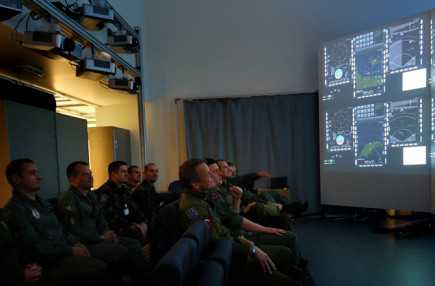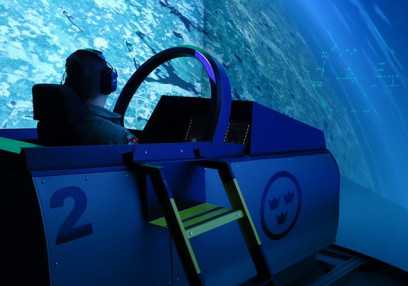Hungarian Gripen Pilots „Carry Out Strike” on Sweden
Szöveg: Maj. Gergely Gróf | 2013. március 17. 6:07This year again, the fighter pilots of the HDF 59th “Szentgyörgyi Dezső” Air Base traveled to Sweden for a week to attend between March 3–8 a tactical simulator training provided under the Gripen contract. The Swedish Defence Research Agency (FOI − Totalförsvarets Forskningsinstitut) runs the annual training in Kista, a district of Stockholm Municipality.

Under the long-term contract, 23 Hungarian airmen can participate in the simulator training.
Since no air combat exercise can be held in the absence of control staff, this year the 18 pilots
of Kecskemét were joined by four intercept controllers (IC) from the HDF Air Command and
Control Centre and one Joint Terminal Attack Controller (JTAC) from the HDF 86th Szolnok
Helicopter Base.
Simultaneously eight “aircraft" may conduct tactical operations in cooperation with each
other at the simulation center. The ICs can direct the aircraft from two separate rooms.
Both the team responsible for mission planning and the executing personnel started preparing
for the weeklong simulator training several weeks earlier. The exercise planning department
constructed the fictitious flight scenarios in advance and uploaded them in the computer
system on the spot, before the flight.

Based on its NATO commitments, Hungary mainly aims at carrying out air defence tasks, but
thanks to the Gripen’s characteristics, it can also execute air-to-ground missions. Accordingly,
the missions included four-on-four beyond visual range (BVR) air combat, where four aircraft
simulated the “good guys", while another four Gripens the “bad boys". As the days went by,
the tasks were becoming more and more difficult. The participants had to defend a computer-
simulated AWACS aircraft, then they had to protect an air strike force from the enemy
aircraft, and the list can be continued on and on…
Watching a giant LED display in the simulator center, one can follow the unfolding air
combat in real time during the flying missions and meanwhile listen to the radiotelephony. All
tasks are logged so they can be analyzed and replayed after the flight, and one can even watch
them in 3D.
The greatest advantage of the simulator training is its cost-effectiveness. The 200-plus
takeoffs during the weeklong training would incur huge costs if carried out in real life.
The centre is a really efficient training facility for the nations of the Gripen User Group
(GUG), where pilots of the Czech and the Swedish air forces are regular training audiences.

Photo: Gábor Zord (2012 pictures)